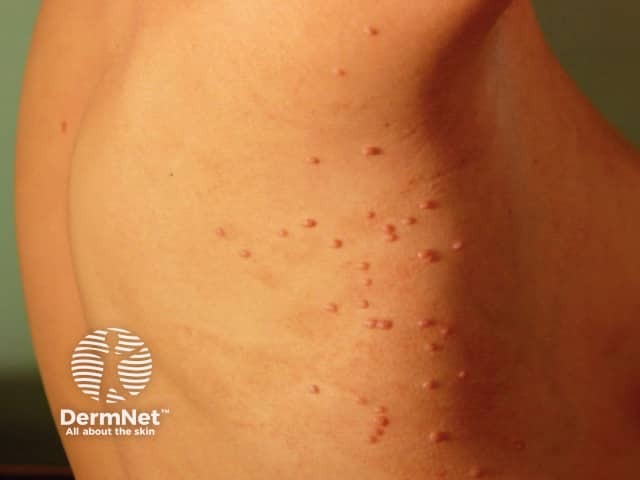Molluscum Contagiosum is a weird rash that we see all the time. In fact, it’s one of my favorite diagnoses to make because it has such a distinct appearance, and I am able to reassure kids and their families that it’s harmless.

Images from DermNet

What is it?
Molluscum is a rash that’s caused by a virus. The virus is contagious and common, so it’s something that many of our patients will be affected by at some point in their childhood.
It has one of the more classic appearances of any rash in pediatrics: the lesions are small pink/skin-colored bumps that have a dimple in the middle.
They are often mistaken for warts, but they are not the same thing!
How does it spread?
It transmits via direct skin-to-skin contact and indirect contact from shared items that have touched the rash. Because of this, it can often run through entire households, affecting all the siblings.
Kids can also spread it on their own body through what we call auto-inoculation (the child scratches or messes with a bump and then touches themselves somewhere else, spreading the rash along their own body).
Does it itch or hurt?
Usually, no. Sometimes the bumps can be mildly itchy. If it’s in a spot that gets rubbed a lot or kids pick at them they may get a little irritated. Most kids wouldn’t know the rash was there except for the fact that they can see the bumps.
When the immune system finally recognizes the virus and starts attacking the molluscum, the lesions can start getting redder, bigger, and more tender. This is actually a good thing and one of the first signs that the molluscum may soon be on their way out.
How do we treat it?
Most of the time molluscum doesn’t need to be treated. At some point the body’s own immune system will fight off the virus and the bumps will self-resolve. BUT this could take months or even years. For kids who have tons and tons of lesions or are aesthetically bothered by them, we have a few treatment options:
- Certain creams that are designed to irritate the lesions in order to bring the immune system to the area
- These are not very effective and can irritate the skin so we don’t use them frequently
- Dermatology referral to discuss further treatment options such as injection of candida antigen
- Topical steroids can be used if the skin around the bumps is itchy/red/dry, but these only treat those symptoms, they won’t make the molluscum go away any faster.
